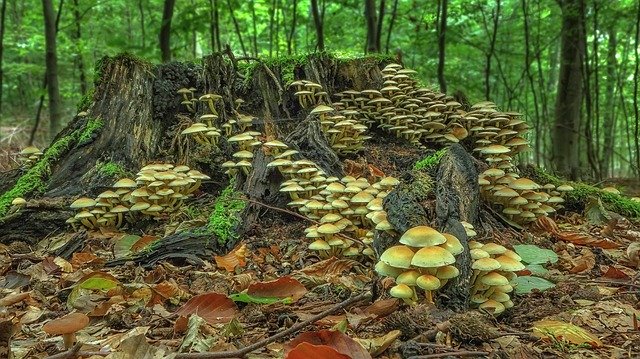Louis Schwartzberg, in his presentation for the Nature Summit, reminded us that each of us has a unique perspective on nature shaped by our childhood experiences, our environmental influences and our culture. In referring to his grandchildren, Louie argued that they viewed nature with “their eyes wide open”. They asked basic, taken-for-granted questions like, “What is air?”, “What is water?” I recall my very young granddaughter sitting on rocky ground in a parkland area studying the lizards and bugs around her in minute detail. She spent an hour in her observations while the rest of us played tennis on a cement strip nearby.
Louie suggests that we need to develop our own “pathways of exploration” to widen and deepen our perspective on nature. This pursuit taken with wide-eyed curiosity will open the world of wonder and awe that is readily available to us. Louie’s macro, micro and time-lapse photography expands our visual capacity when viewing nature. He not only accentuates the expansiveness of nature, makes visible the unseen but also contracts time by taking us on a “journey of time and space”. His film, Fantastic Fungi: The Magic Beneath our Feet, takes us underground to explore the internet-like network of Mycelium that lie beneath the mushrooms that are visible to our naked eye. We are guided on this journey by Louie and world-famous mycologist, Paul Stamets, along with other highly informed commentators.
Louie maintains that the perspective of white Caucasians on nature is very different to that of indigenous people who grew up in an environment conscious of nature’s interconnectedness and educated to understand, respect and value nature.
An indigenous artist’s perspective on nature
In her presentation for the Nature Summit, Seeing Through the Lens of an Artist, Camille Seaman explained that very early in life she was taught that “we are connected to everything, that everything has a life force”. Camille is an indigenous photographer who “focuses on fragile environments, extreme weather, and stark beauty of the natural world” with the purpose of demonstrating that humans and nature are not separate. Her photography is a call to understand and value our connectedness to nature and to take “ responsible action” to restore and preserve our increasingly fragile ecosystems. Camille has specialised in polar photography and has provided several TED Talks on topics such as The Last Iceberg.
Camille explained that in her early childhood, her Grandfather taught her so much about an indigenous perspective on nature, on connectedness and on respect. He would reverently refer to trees as relatives and would introduce her to each of the trees in the woods while she placed her hands on the tree. When Camille would unnecessarily break branches from trees he would say to her, “If you think you are separate from the trees, see how long you can hold your breath”. He highlighted the fact that you “cannot harm it [the tree] without harming yourself”.
Camille spoke of the interconnectedness of nature in many ways. For example, she indicated that clouds bring rain which provide water for plants which, in turn, feed animals. She maintained that storms give new life and energy to the ground and help us to appreciate that all life is transitory. She tells her own life story and development as a bi-polar photographer covering Antarctica and Artic Poles in a TED Talk titled, Connection and Purpose: Tales of a Polar Photographer.
In her Nature Summit presentation, Camille emphasised the need to spend time in stillness and silence before taking a nature photograph so that you can be truly immersed in whatever you are viewing and bring a new perspective to what you are seeing. She maintains that stillness in nature enables you to dissolve “the veil of separateness”. She stated that amazing synchronies can occur in this stillness, e.g., animals may come out from their hiding place. Intriguingly, not long after I was listening to her presentation, I was in the backyard weeding our rock garden when two birds flew down and sat beside me – a mother and her young bird. They started singing and responded when I (hoarsely) attempted to whistle in return.
Reflection
Nature is all around us and in constant motion and transition – most of which we are totally unaware of. Photographers like Louie and Camille bring this movement and change to life so that we can see things that we would not normally notice, experience emotions often hidden from us and value our connectedness with nature. As we grow in mindfulness, we can expand and deepen our perspective on nature and value our connectedness, leading to wise and purposeful action to preserve it.
_________________________________________
Image by Andrea Spallanzani from Pixabay
By Ron Passfield – Copyright (Creative Commons license, Attribution–Non Commercial–No Derivatives)
Disclosure: If you purchase a product through this site, I may earn a commission which will help to pay for the site, the associated Meetup group, and the resources to support the blog.

